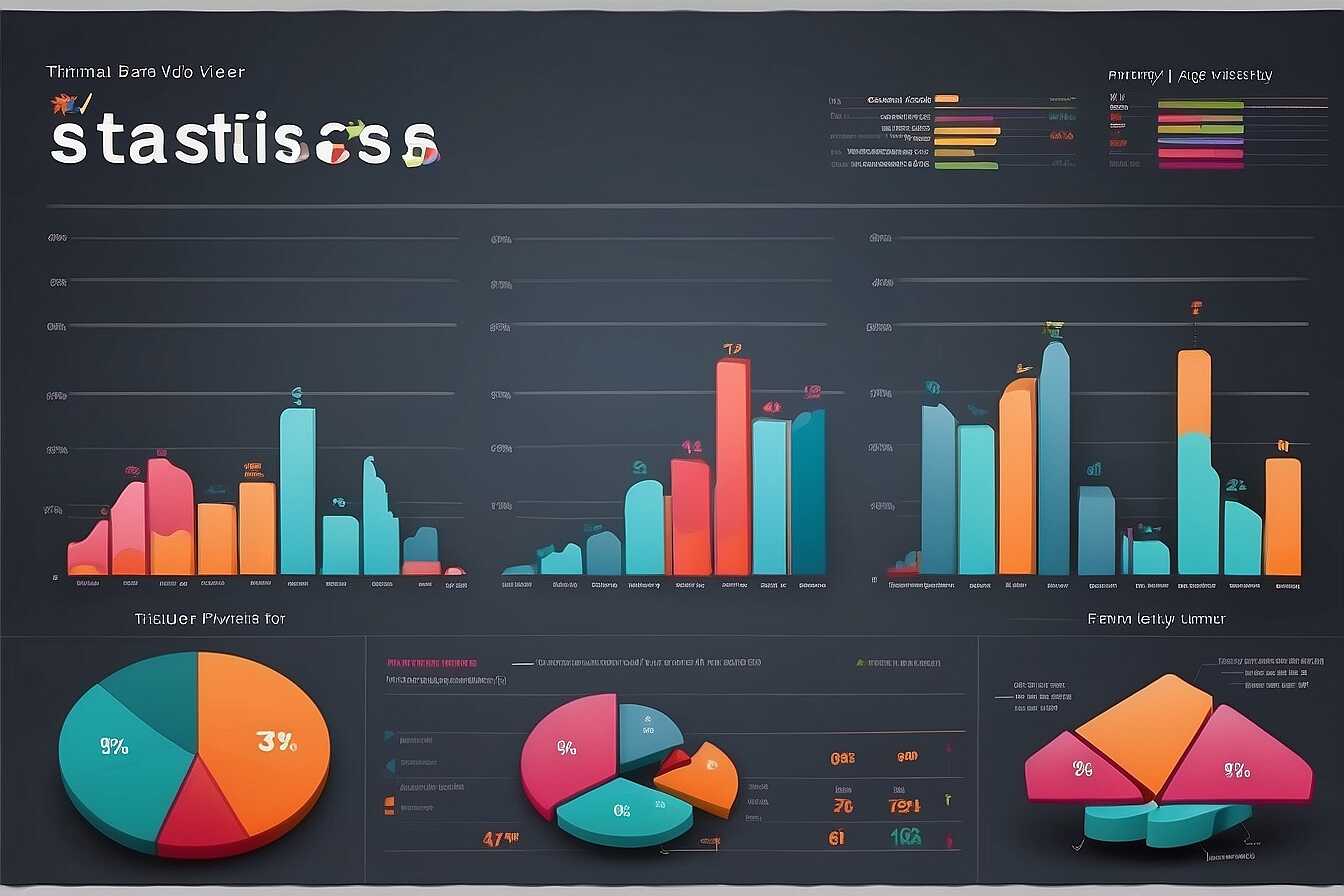Optimizing your robots.txt file is crucial for enhancing SEO crawling and improving your website’s search rankings. A well-crafted robots.txt file guides search engines and helps manage how your site’s content is indexed. At Metrics Rule, we understand the importance of technical and on-page SEO in ensuring effective crawling, so mastering this tool can lead to better website performance and visibility. By refining your robots.txt strategy, you can maximize your indexing potential and ultimately improve user engagement.
Understanding the Role of Robots.txt Files in SEO
The fundamental purpose of a robots.txt file is to instruct search engines on how to crawl and index a website’s pages. This file helps maintain a site’s reliability and overall performance in SEO. By specifying which areas of your site should be crawled or ignored, a well-optimized robots.txt file can enhance search engine crawling efficiency. Popular search engines, including Google and Bing, rely on this file to determine which content is accessible for indexing. This can greatly influence how quickly and effectively your site appears in search results, improving overall visibility and user experience.
Best Practices for Robots.txt Optimization
To optimize your robots.txt file effectively, focus on common practices such as disallowing non-essential pages or duplicate content. Include directives that enhance web crawling efficiency, such as allowing crawlers only to index your most vital pages while excluding those that offer little to no SEO value. For instance, a well-crafted robots.txt can help prevent search engines from indexing thank-you pages or login forms, ensuring that only high-quality content appears in search results. By regularly testing and reviewing your robots.txt file, you can ensure that it continues to serve its essential purpose in your overall SEO strategy. Metrics Rule’s experience in technical SEO ensures our clients effectively leverage tools like the robots.txt file for optimal search engine performance.
Identifying Misconfigurations in Robots.txt Files
Common misconfigurations in robots.txt files can impede crawling efficiency, leading to significant SEO setbacks. These include incorrect directives like “Disallow: /” which can block search engines from indexing essential pages, unintended wildcard usage, or misplacement of directives that could prevent crawlers from accessing critical content. To ensure proper crawling, users should review entities such as URLs, specific pages, and directories targeted in the file to avoid these errors. A well-optimized robots.txt file should ideally include around five to ten directives to maintain clarity while guiding search engines effectively.
Key Misconfiguration Patterns to Watch For
When optimizing your robots.txt file, be vigilant for these key misconfiguration patterns. One pattern involves using “Disallow” to block entire directories that contain important resources, preventing Google and Bing from accessing them. Another common error is neglecting to allow the crawling of essential sitemap files, which hinders indexing. Lastly, overlapping “User-agent” directives can confuse crawlers, diminishing your page’s overall reliability in search results. Ensuring that your robots.txt comprehensively addresses these aspects can significantly enhance your site’s crawling efficiency and SEO performance.

Best Practices for Crafting Optimized Robots.txt Files
Creating an optimized robots.txt file is essential for ensuring effective SEO and efficient crawling. Begin with the essential elements, such as specifying user-agents, which are directives that tell search engines like Google and Bing how to interact with your pages. It’s also important to include rules that limit access to specific directories or files that do not enhance your website’s performance or SEO. Keeping your robots.txt file under 200 lines is recommended for optimal efficiency, as excessive lines can complicate directives and lead to errors. Testing your robots.txt file frequently with tools like Google’s Robots Testing Tool can further ensure accuracy and effectiveness.
Common Mistakes to Avoid When Creating a Robots.txt File
When crafting your robots.txt file, avoid common mistakes that can harm your SEO efforts. For instance, not blocking access to sensitive areas like admin sections or scripts can result in search engines indexing unwanted content. Additionally, using incorrect syntax or failing to specify the proper user-agent could lead to unintended results. Ensure you review your robots.txt file regularly to match updates in your content and overall site structure. Implementing these SEO best practices can enhance your overall indexing and crawling efficiency, ensuring your website performs excellently in search engine results.
Key Statistics to Know for Effective Web Crawling
- About 63% of websites have a misconfigured robots.txt file.
- Your site’s crawl budget may be limited based on various factors.
- Search engines like Google have over 200 ranking factors.
- Improper blocking can lead to decreased visibility and indexing issues.
- On-page issues can account for up to 30% of search engine ranking problems.
- Approximately 25% of crawled pages will not show up in search results.
- The average page load time affects how quickly web spiders can crawl.

How to Properly Test Your Robots.txt File
To validate your robots.txt file configurations effectively, several tools can streamline the testing process. Google Search Console offers a straightforward method to check how Google interprets your file. Additionally, tools like Robots.txt Tester and SEO browser simulation software enable users to review how other search engines, such as Bing and Yahoo, will crawl your website. Regular testing ensures crawling efficiency and minimizes errors. In 2025, staying updated on the best practices for testing will enhance your website’s SEO.
Exploring Search Engine Responses to robots.txt
Understanding how various search engines like Google and Bing interpret your robots.txt file is crucial for optimizing your site. Google prioritizes clear directives to avoid crawling errors, while Bing may provide different interpretations for the same commands. By leveraging SEO testing tools, you can analyze these responses and make necessary adjustments to enhance your site’s visibility. The vital aspect is ensuring your directives align with each search engine’s crawling behavior, thus improving your overall performance and search rankings.

Combining Robots.txt with Other SEO Techniques
Integrating robots.txt files with sitemaps is essential for effective SEO strategy. A well-structured robots.txt file helps search engine bots know which pages to crawl or ignore, improving crawling efficiency. By pairing this with a comprehensive sitemap, you ensure that critical pages are prioritized during indexing. It’s crucial to align your robots.txt policies with broader SEO elements, such as structured data and meta tags. This holistic approach enhances website visibility, making it easier for search engines like Google and Bing to understand your content.
Essential SEO Elements to Consider Alongside Robots.txt
When optimizing your robots.txt file, it’s important to consider essential SEO elements such as sitemaps and structured data. A clear sitemap complements your robots.txt by listing all accessible pages, improving crawling efficiency. You should also review technical SEO aspects, ensuring mobile optimization and fast load times. Focus on the number of disallow rules; ideally, limit them to essential pages that should not be indexed. This balance helps maintain a high-performance site, ultimately enhancing your search rankings and user experience.
Advantages of Fine-tuning Your Site’s Crawling Settings
- Enhances the overall SEO performance of your website.
- Reduces server load by preventing unnecessary crawling of unimportant pages.
- Improves the speed at which search engines index your key content.
- Enables better control of the pages you want indexed or ignored.
- Helps to guide web crawlers efficiently through your site structure.
- Boosts the effectiveness of your digital marketing campaigns by improving rankings.
- Facilitates quicker updates of your content in the search engine results page (SERPs).

Managing Crawling on Extensive Websites with Robots.txt
Effectively managing crawling on extensive websites using robots.txt involves several best strategies. First, consider structuring your robots.txt file to restrict access to non-essential parts of your site, which helps enhance crawling efficiency. For example, e-commerce sites often have product pages, category pages, and filtered views that may not need indexing. By disallowing crawlers from indexing these sections, you improve the chances of search engines focusing on your most valuable content. Additionally, it’s important to regularly review and test your robots.txt file to ensure it provides the desired access while still enabling efficient crawling practices. This proactive maintenance will help prevent indexing errors and enhance overall site performance.
Best Practices for Robots.txt on E-Commerce Websites
For e-commerce websites, implementing best practices in robots.txt can significantly improve indexing efficiency. Ensure your robots.txt file features directives that specifically address category and product URL structures. This allows search engines to focus on key pages like bestsellers or new arrivals while ignoring filtered product views that can clutter search results. Regularly analyze your site’s performance with tools like Google Search Console to identify any crawling issues. By using AI and data-driven insights, you can refine your robots.txt file to dynamically adapt to changes in site structure or content, ultimately enhancing your site’s visibility and ensuring a better experience for users.
Evaluating the Effectiveness of Your Robots.txt File
To monitor the effectiveness of your robots.txt file on SEO performance, start by using tools such as Google Search Console and Bing Webmaster Tools. These platforms provide data on how search engines interpret your file. Check for crawl errors, as they are key indicators of which pages are being blocked and may affect your website’s indexing. Key elements to analyze include the number of pages indexed, crawl errors reported, and any changes in organic search traffic resulting from updates to your robots.txt. Regular reviews, ideally quarterly, can help ensure the file remains optimized for SEO performance.
Key Metrics for Effective Robots.txt Monitoring
To effectively monitor your robots.txt file, focus on key metrics that provide insights into crawling efficiency. Monitor the crawl rate to see how often search engine bots are accessing your website. Pay attention to the coverage report in Google Search Console, which displays indexed versus non-indexed pages. This ensures that essential content is accessible to crawlers, enhancing overall site performance. Consider implementing A/B testing for different configurations in your robots.txt file. This can provide concrete evidence of what changes yield better indexing results and boost your site’s SEO performance.
Brands and Demographics Interested in Crawler Settings Optimization
- Small business owners often seek optimization for local SEO benefits.
- SEO agencies frequently provide tailored advice for brands looking to improve rankings.
- Content-heavy websites benefit from enhanced indexing management.
- Bloggers aim to ensure relevant posts get discovered by search engines.
- E-commerce platforms focus on ensuring product pages are correctly indexed.
- Tech companies often require efficiency in crawling due to dynamic site content.
- Digital marketing enthusiasts explore optimization for better online visibility.
Anticipating Future Developments in Robots.txt and SEO
SEO professionals should prepare for several emerging trends regarding robots.txt files. One key trend is the growing use of AI in optimizing these files for better SEO results. AI technologies can analyze vast amounts of data to determine the most efficient configurations for crawling and indexing. In addition, as more websites recognize the importance of advanced robots.txt strategies, data suggests a significant increase—projected to be over 50%—in the number of websites effectively leveraging these strategies by 2025. Staying ahead requires keeping an eye on these advancements to enhance your SEO strategies.
AI Innovations and Their Influence on Robots.txt Management
As we look toward the future, AI innovations will drastically change how we manage robots.txt files. These technologies will provide deep insights into indexing patterns, enabling webmasters to make data-driven decisions about which parts of their site should be crawled or blocked. Tools developed using AI will not only enhance the efficiency of robots.txt optimization but will also deliver actionable insights for continual improvement. With such advances, businesses can expect faster indexing of critical pages, ensuring they stay competitive in the increasingly crowded digital landscape.
